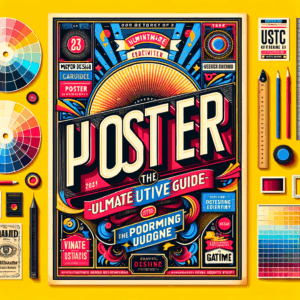
Typography Prompt Ideas: Stunning Must-Have Inspirations
- Understanding the Importance of Typography
- Classic Typography Styles
- Serif Fonts
- Sans-Serif Fonts
- Playing with Font Pairings
- Contrasting Styles
- The Harmony of Similar Fonts
- Experimenting with Color in Typography
- Color Psychology
- Gradient Effects
- Creative Typography Techniques
- Letter Spacing and Line Height
- Text Shadow and Overlays
- Typography in Branding
- The Role of Typography in Logos
- Consistency Across Platforms
- Typography for Web and Mobile
- Responsive Typography
- Legibility on Screens
- Conclusion
- FAQs
- References
Understanding the Importance of Typography
Typography shapes the way we perceive words and phrases. It’s the art of arranging text in a way that makes it readable, aesthetically pleasing, and engaging. Think about it: When you pick up a book or scroll through a website, the typography style often determines your experience. Good typography can affect everything from website usability to brand perception.
Great typography enhances a design or message. It builds a strong connection between content and audience. However, finding inspiration can sometimes prove challenging. Luckily, we have various typography prompt ideas to spark your creativity. Let’s explore some stunning typography inspirations that can elevate your design game.
Classic Typography Styles
Serif Fonts
Serif fonts exude elegance and tradition. They feature small lines or “serifs” at the ends of strokes. Think Times New Roman or Garamond; these fonts evoke a sense of reliability and formality. You often see them in newspapers and books, thereby connecting them with scholarly and historic content.
Using serif fonts can add a touch of sophistication to your project. They work well in settings where you want to create trust. For instance, financial institutions often use serif fonts to convey stability. If you want to communicate authority and reliability, consider using a serif font for your headlines or body text.
Sans-Serif Fonts
Sans-serif fonts are modern and sleek. They lack the decorative serifs, making them clean and straightforward. Fonts like Arial and Helvetica are popular examples. You’ll often find them on websites and in graphic design due to their clarity at various sizes.
Sans-serif fonts are excellent for digital platforms. Their simplicity ensures easy reading on screens, essential in today’s online-centric world. When designing a modern brand, lean into sans-serif typography to create a clean and contemporary look.
Playing with Font Pairings
Combining different font styles can create a striking visual effect. Pairing fonts also helps establish a hierarchy in your text. For example, using a bold display font for titles and a classic serif for body text can enhance readability and aesthetics.
Contrasting Styles
Using contrasting styles in typography adds flair to your designs. For instance, pairing a playful script font with a serious sans-serif can create an interesting dynamic. This contrast draws the reader’s attention, guiding them through the content seamlessly.
To effectively combine fonts, consider these tips:
– Maintain a balance: Ensure that one font doesn’t overpower the other.
– Limit your choices: Stick to two or three fonts to avoid clutter.
– Use size and color: Adjust size and color to reinforce the visual hierarchy.
The Harmony of Similar Fonts
While contrasting styles can be exciting, using similar fonts can create a cohesive look. Fonts from the same family often complement each other well, allowing for a seamless transition in your design. For example, pairing a bold version of a font with a lighter weight can maintain harmony while adding interest.
When opting for similar fonts, keep these guidelines in mind:
– Different Sizes: Use different sizes to distinguish between headings and body text.
– Consistent Color Palette: Stay within a cohesive color scheme to maintain unity.
– Whitespace: Use ample whitespace to keep your design clean and organized.
Experimenting with Color in Typography
Color can drastically influence the impact of your typography. Whether you want to convey a sense of calm or energy, the right color choices can elevate your design. Here’s how you can effectively use color in typography.
Color Psychology
Different colors evoke different emotions. Understanding color psychology can help you select the right hues for your typography. For example:
– Red conveys passion and urgency.
– Blue represents trust and stability.
– Green evokes growth and tranquility.
When choosing colors for your typography, consider your brand’s values. Align your choice with the emotions you wish to evoke in your audience.
Gradient Effects
Color gradients can create a stunning visual impact. A gradient can add depth and dimension to your text, making it pop off the page. For instance, using a subtle blue-to-green gradient can provide a refreshing appearance.
To use gradient colors effectively:
– Limit Colors: Stick to two or three colors for a clean look.
– Ensure Readability: Ensure that the colors don’t compromise legibility.
– Test Visibility: Check how the gradient looks on different screens and devices.
Creative Typography Techniques
Creative typography techniques can transform ordinary text into captivating visuals. Implementing these strategies not only draws attention but also enhances the overall design.
Letter Spacing and Line Height
Adjusting letter spacing (also known as kerning) and line height significantly affects readability and aesthetics. Increased letter spacing can give your text a lighter feel, while tighter spacing makes it more compact. Similarly, the line height can dictate how breezy or dense your text feels.
When experimenting with spacing, consider the following:
– Purpose: Define the purpose of your text. A heading may benefit from wider spacing, while body text requires normal spacing for readability.
– Audience: Know your audience. Children’s books might use wider spacing for easier reading.
– Environment: Think about where the text will appear. Online content may need more breathing room to enhance readability on screens.
Text Shadow and Overlays
Text shadows add depth to your typography. A well-placed shadow can create a three-dimensional effect, making your text stand out against backgrounds. Overlays can transform basic typography into a striking design element. For example, using an image behind text can create a compelling visual effect.
Use these techniques sparingly to maintain focus on your content while enhancing visual interest.
Typography in Branding
Good typography is essential for effective branding. It reflects your company’s identity and strengthens brand recognition. A well-chosen typeface communicates your values without words.
The Role of Typography in Logos
Logos often encapsulate a brand’s essence. Typography plays a critical role in logo design. The right font communicates your brand’s message instantly. For instance, a luxury brand might use a sophisticated serif font, while a tech company may prefer a modern sans-serif.
Consider these tips for typographical logos:
– Simplicity: Aim for clean, easy-to-read fonts.
– Uniqueness: Customize a typeface to create an original brand identity.
– Timelessness: Choose a font that will stand the test of trends.
Consistency Across Platforms
To achieve a cohesive brand image, maintain consistent typography across all platforms. This consistency reinforces your brand identity and helps audiences recognize your brand at a glance. Whether it’s social media, your website, or printed materials, the same typefaces should be employed.
Create a style guide for your typography choices. Include font styles, sizes, and color schemes to ensure everyone on your team adheres to your branding.
Typography for Web and Mobile
Responsive Typography
Responsive typography adapts to various screen sizes. With the rise of mobile browsing, ensuring that your text remains readable on all devices is crucial. Consider using relative units like “em” or “rem” rather than fixed pixels for font sizes.
Utilizing CSS media queries helps ensure that text resizes appropriately on mobile devices. As a result, your content will remain accessible regardless of how users access it.
Legibility on Screens
Screen legibility is paramount when choosing typography. Ensure your color contrasts well with the background to facilitate reading. Avoid overly decorative fonts that can hinder text clarity, particularly in long paragraphs.
Opt for simple, sans-serif fonts for body text. They are easier to read on screens, enhancing user experience.
Conclusion
Typography is more than just choosing a font. It’s a creative approach to expressing ideas and emotions through text. Whether you’re designing a logo, building a website, or crafting a print piece, thoughtful typography can elevate your work. Dive into the world of typography and let these inspirations guide you in creating stunning designs that resonate with your audience.
FAQs
1. What is typography?
Typography is the art of arranging text to make it readable and visually appealing.
2. Why is typography important in design?
Good typography enhances readability, communicates brand identity, and affects user experience.
3. How do I choose the right font?
Consider your brand’s personality, the message you want to convey, and the context of your content.
4. What is the difference between serif and sans-serif fonts?
Serif fonts have small decorative lines at the ends of strokes, while sans-serif fonts do not.
5. How can I improve text readability?
Use appropriate font sizes, good color contrast, and sufficient line spacing.
6. What are some popular font pairings?
Popular pairings include serif headers with sans-serif body text and vice versa.
7. How can color affect typography?
Colors evoke emotions and create visual interest, making them critical in typography.
8. What are some best practices for web typography?
Use responsive design, ensure legibility, and maintain consistent typographic styles across platforms.
9. How do I create a unique typographic logo?
Customize a typeface, focus on simplicity, and incorporate brand values into your design.
10. Is there a limit on the number of fonts I should use in a project?
Yes, it’s best to limit font choices to two or three to avoid clutter and maintain clarity.
References
– Smashing Magazine
– Adobe Fonts Blog
– Creative Bloq
– Design Shack
– Canva Journal

